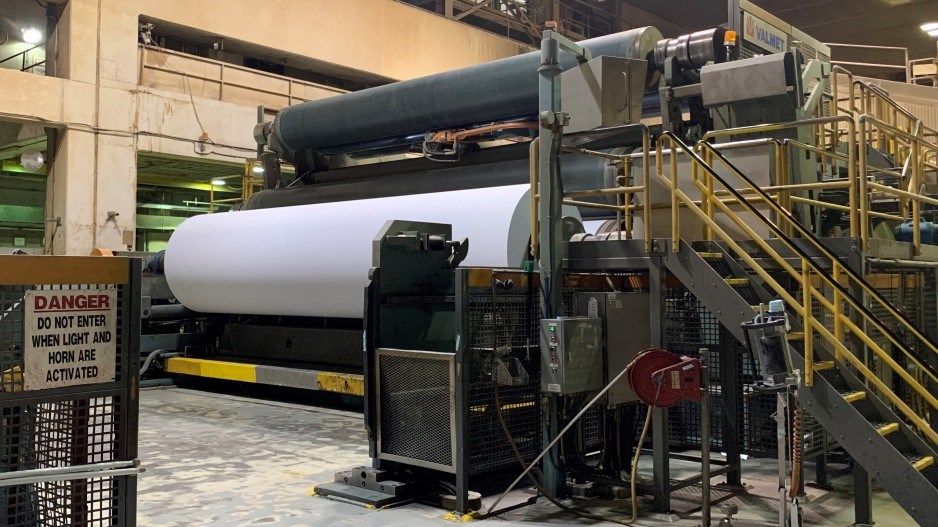Faced with a dwindling supply of harvestable timber, and the need to protect more old growth forests, NDP government officials have talked about the need to do more with less and focus more on high value-added wood products.
So it’s instructive to hear what Metro Vancouver businesses in the secondary manufacturing sector think about the provincial government’s plans to protect up to an additional 2.6 million hectares of old growth, about half of which the government says is in the timber harvesting land base.
“I'm potentially scared,” Brian Menzies, executive director of the Independent Wood Processors Association, said Thursday at a Truck Loggers Association forum on the B.C. government’s old growth strategy and forestry modernization plans.
He’s scared because about half the wood secondary manufacturers here use comes from old growth. Secondary manufacturing can include everything from paper mills and remanufactured wood products to wooden fence picket production, often using lower value wood and lumber products.
While government officials have tried to calm nerves by saying the deferrals on old growth logging are “temporary” and will take some time before some they become permanent and result in adjustments to the annual allowable cut (AAC), the government ordered BC Timber Sales to immediately halt the advertising and sale of any timber from the areas identified for possible deferrals.
That’s 570,000 hectares of timber that's now off limits to buyers, and it is having an immediate impact on secondary manufacturers, Menzies said.
And lest urbanites think this is something that only affects rural communities, of the 61 businesses that belong to Menzies’ association, only 14 are outside of Metro Vancouver. Five members are in Vancouver, 11 in Surrey, four in Richmond, four in Delta and three in North Vancouver.
“The value-added sector has real concerns, not when the AAC is determined – we have some real concerns right now on the supply of our fibre,” Menzies said. “I can tell you right now, we’re running out. We're talking months when we're running out here, when businesses are shutting down.”
But do most British Columbians even care? Extractive industries are dinosaurs that can be replaced by industries like film and TV, high-tech and tourism, right?
That is the prevailing attitude in cities like Vancouver and Victoria, and it’s one that could lead to a serious decline in British Columbians’ standard of living, said Don Wright, a former senior government bureaucrat and current senior fellow of the Public Policy Forum.
He said B.C.’s forest industry has lost its social licence in B.C., as British Columbians have become disconnected from the industries that make up the backbone of the economy.
“There is a growing sense that B.C. doesn't need the resource industries anymore,” Wright said. “I think they're just dead wrong.
“For all the blather about resource based industries no longer being important, they still are what puts bread on Canadians’ table. Energy products, forestry, paper, mining and agriculture – that’s still what drives the Canadian economy.
“You hear a lot of chatter about film, high-tech, and tourism. The people that suggest we could easily replace the resource industry with those sectors are just dreaming in Technicolor. I suppose we could replace them with those industries, but we would see a significant reduction in our standard of living, if we do that.”
The Horgan government’s forestry modernization plans includes making more of B.C.'s old growth forests off limits to logging.
Garry Merkel, the only regsitered professional forester on the government’s five-person Old Growth Review Panel, explained Thursday why it’s necessary to protect remaining old growth ecosystems.
“We need to start managing to look after the health of our ecosystems,” Merkel said. “Trees are not ecosystems. Trees are the product of ecosystems. You can have a 200-year-old stand or a 300-year-old stand, and it's still not an old ecosystem.
“The health of the ecosystem and landscape depends hugely on how much of the old components of that ecosystem are left.”
What the panel recommended was protection of ecosystems that are at risk of irreversible damage and permanent loss of biodiversity.
“We are losing caribou and moose in this province right now at a mass scale, and that can be tied directly back to the way we are doing our management,” Merkel said.
Government officials have tried to calm industry nerves by saying the 2.6 million hectares of deferrals are temporary and only covers half of the timber harvest land base. It still needs First Nations to agree to the plan, and some have already stated they disagree with the deferrals.
Jim Girvan, an independent forestry analysts and consultant, said that, throughout his long career, he is not aware of a temporary deferral that didn’t become permanent.
“Old growth deferrals, if they are made permanent, will reduce the annual level cut in the province by about 4 million cubic meters -- 1.2 million on the coast, 2.8 million in the interior,” he said.
“The reduction will likely spur the closure of about 10 additional sawmills -- five on the coast and five in the interior -- all of which are primarily focused on the use of large logs, as well one or more Interior pulp mills and one or more coastal pulp mills.
Secondary industries like pellet plants could also be “casualties,” he added.
“The loss of old growth forests will have a negative and direct impact on the value-added sector which, ironically, is being proposed as the new growth sector by the B.C. government,” Girvan said. “Simply put, you need a healthy two-by-four industry to grow the secondary manufacturing industry.”
He added that caribou habitat protection plans the province plans to implement could also result in additional 10% reduction in the Interior AAC.
He estimated the impact on government revenues of old growth deferrals will be $288 million annually.




